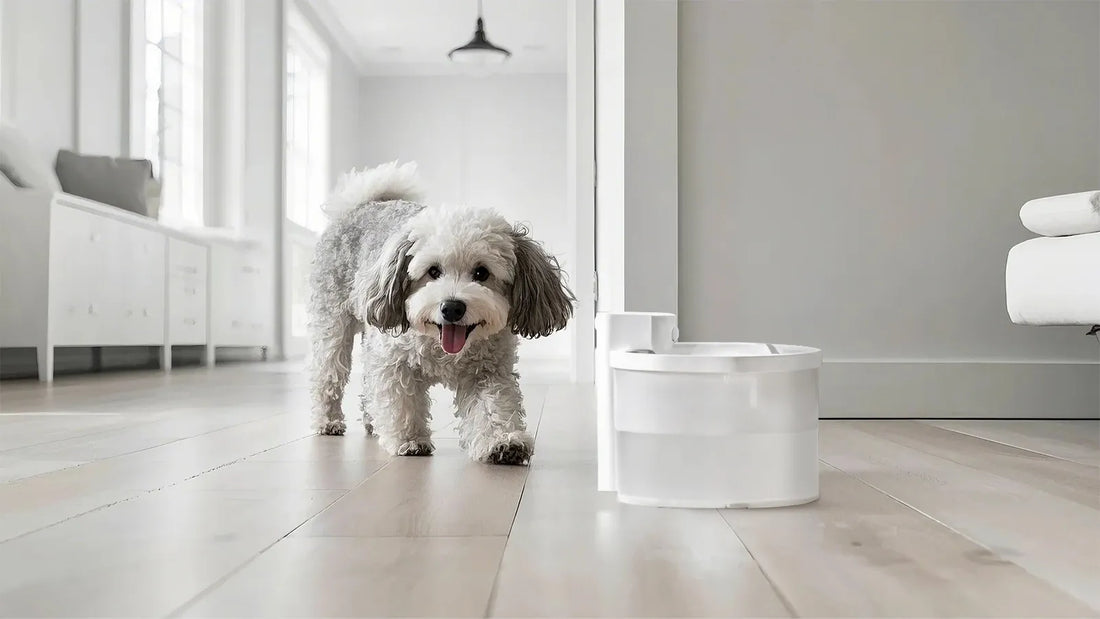Have you ever walked into your kitchen only to find your dog peeing in its food bowl after eating? This bizarre behavior can leave pet owners scratching their heads and wondering what could possibly be going on in their furry friend's mind. While it may seem like a strange and even frustrating habit, there are several reasons why dogs might engage in this behavior. Understanding the underlying causes is the first step toward addressing the issue and ensuring your pet's well-being.
Why Does My Dog Pee in Its Food Bowl After Eating?
Dogs are complex creatures with behaviors that can sometimes be difficult to decipher. When it comes to peeing in the food bowl after eating, there are a few potential explanations:
- Marking Territory: Dogs are naturally territorial animals. Peeing in the food bowl could be a way for your dog to mark its territory, especially if there are other pets in the household.
- Stress or Anxiety: Changes in the environment, such as moving to a new home or the introduction of a new pet, can cause stress or anxiety in dogs. This may lead to unusual behaviors like peeing in the food bowl.
- Medical Issues: Urinary tract infections, bladder stones, or other medical conditions can cause a dog to urinate in inappropriate places, including the food bowl.
- Learned Behavior: If your dog has been rewarded or inadvertently reinforced for peeing in the food bowl in the past, it may continue the behavior.
How to Address the Behavior
Once you've identified the potential cause of your dog's behavior, you can take steps to address it. Here are some strategies to consider:
1. Consult a Veterinarian
If you suspect that a medical issue is causing your dog to pee in its food bowl, it's essential to consult a veterinarian. A thorough examination and diagnostic tests can help rule out or confirm any underlying health problems. Treatment will depend on the specific condition, but addressing the medical issue should help resolve the behavior.
2. Reduce Stress and Anxiety
If stress or anxiety is the root cause, creating a calm and stable environment for your dog is crucial. Consider the following tips:
- Provide a safe space where your dog can retreat and feel secure.
- Use calming aids such as pheromone diffusers or anxiety wraps.
- Maintain a consistent routine to reduce uncertainty and stress.
3. Reinforce Positive Behaviors
Training your dog to associate positive behaviors with rewards can help eliminate unwanted habits. Here's how:
- Praise and reward your dog when it urinates in the appropriate place.
- Redirect your dog's attention if you catch it about to pee in the food bowl.
- Use positive reinforcement techniques to encourage good behavior.
4. Modify the Feeding Routine
Sometimes, adjusting your dog's feeding routine can make a difference. Try these suggestions:
- Feed your dog in a different location to break the association between eating and peeing in the bowl.
- Remove the food bowl immediately after your dog finishes eating to prevent access.
- Provide plenty of opportunities for your dog to relieve itself outside before and after meals.
Preventing the Behavior in the Future
Prevention is always better than cure. Here are some proactive measures to ensure your dog doesn't develop the habit of peeing in its food bowl:
1. Establish a Consistent Routine
Dogs thrive on routine. Establishing a consistent schedule for feeding, walks, and bathroom breaks can help prevent accidents and unwanted behaviors.
2. Provide Adequate Exercise
Regular exercise is essential for a dog's physical and mental well-being. A tired dog is less likely to engage in destructive or unusual behaviors.
3. Monitor Your Dog's Behavior
Keep an eye on your dog's behavior, especially during times of change or stress. Early intervention can prevent habits from becoming ingrained.
4. Create a Positive Environment
Ensure your dog feels safe and secure in its environment. A positive and nurturing atmosphere can reduce the likelihood of stress-related behaviors.
Understanding why your dog pees in its food bowl after eating is the first step toward addressing the issue. By identifying the underlying cause and implementing effective strategies, you can help your dog break this habit and enjoy a happier, healthier life. Remember, patience and consistency are key when working with your furry friend. With the right approach, you can turn this puzzling behavior into a thing of the past.

![[🎃Halloween Sale]UAHPET Stainless Steel Self-Cleaning Cat Litter Box](http://www.uahpet.com/cdn/shop/files/1-cat-litter-box.jpg?v=1759128420&width=1600)












